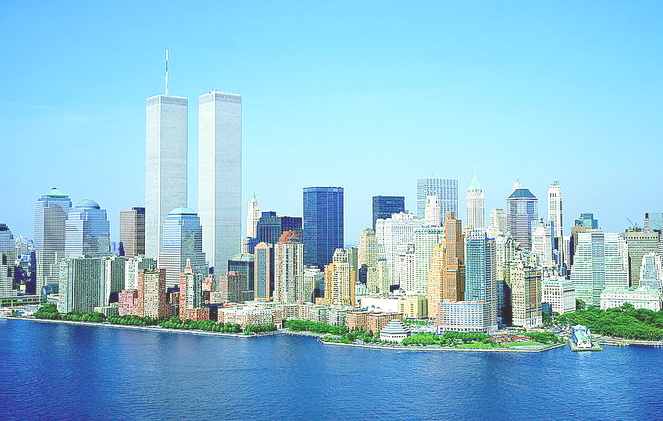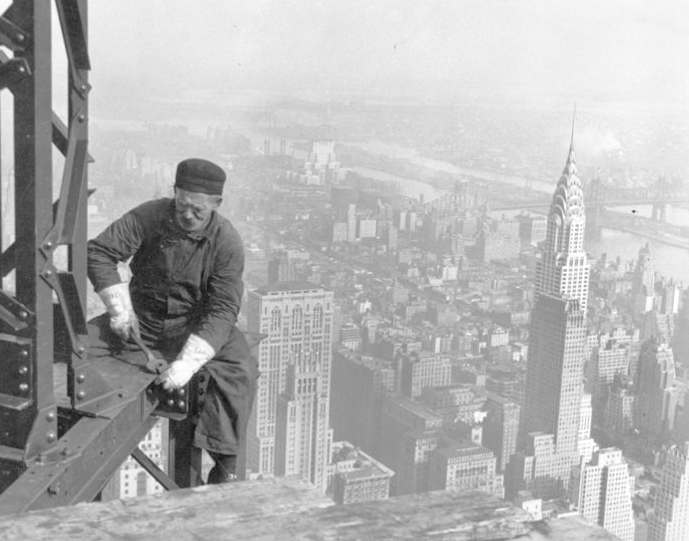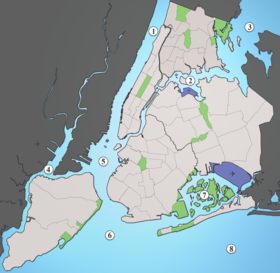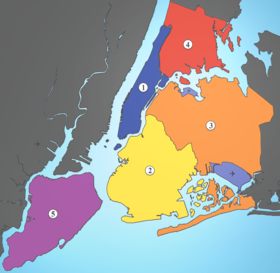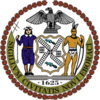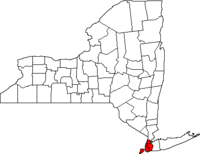|
NEW YORK
|
||||||||||||||||||||||||||||||||||||||||||||||||||||||||||||||||||||||||||||||||||||||||||||||||||||||||||||||||||||||||||
|
HOME | BIOLOGY | FILMS | GEOGRAPHY | HISTORY | INDEX | MUSIC | THE BOAT | SOLAR BOATS | SPONSORS |
||||||||||||||||||||||||||||||||||||||||||||||||||||||||||||||||||||||||||||||||||||||||||||||||||||||||||||||||||||||||||
|
New York City is the largest city in the United States and one of the world's major global cities. Located in the state of New York, the city has a population of over 8.1 million within an area of 321 square miles (approximately 830 km²)., making it the most densely populated city in North America. Its metropolitan area has a population of 18.7 million and is one of the largest urban areas in the world.
New York City is a center for international finance, fashion, entertainment, and culture, with an extraordinary collection of museums, galleries, performance venues, media outlets, international corporations, and financial markets. It is also home to the headquarters of the United Nations and to some of the world's most famous skyscrapers.
Popularly known as the "Big Apple," the city attracts large numbers of immigrants—over one-third of its population is foreign born—as well as people from all over the United States who come for its culture, fast-paced lifestyle, cosmopolitanism, and economic opportunity. It is among the most diverse cities in the world—138 languages are spoken in Queens alone. The city is also distinguished for having the lowest crime rate among the 25 largest American cities.
Lower Manhattan's skyline with the Twin Towers of the World Trade Center (1973 – 2001)
History
The region was inhabited by the Lenape Native Americans at the time of its discovery by Italian Giovanni da Verrazzano. Although Verrazzano sailed into New York Harbor, his voyage did not continue upstream and instead he sailed back into the Atlantic. It was not until the voyage of Henry Hudson, an Englishman who worked for the Dutch Republic, that the area was mapped. He discovered Manhattan on September 11, 1609, and continued up the river that bears his name, the Hudson River, until he arrived at the site where New York State's capital city, Albany, now stands. The Dutch established New Amsterdam in 1613, which was granted self-government in 1652 under Peter Stuyvesant. The British took the city in September 1664, and renamed it "New York" after the English Duke of York and Albany. The Dutch briefly regained it in August 1673, renaming the city "New Orange," but ceded it permanently in November 1674.
Under British rule the City of New York continued to develop, and while there was growing sentiment in the city for greater political independence, the area was decidedly split in its loyalties during the New York Campaign, a series of major early battles during the American Revolutionary War. The city was under British occupation until the end of the war and was the last port British ships evacuated in 1783.
New York City was the capital of the newly-formed United States from 1788 to 1790. In the 19th century, the opening of the Erie Canal in 1825 enabled New York to overtake Boston and Philadelphia in economic importance, and local politics became dominated by a Democratic Party political machine known as Tammany Hall that drew on the support of Irish immigrants. The New York Draft Riots during the American Civil War were suppressed by the Union Army. In later years, known as the Gilded Age, the city's upper classes enjoyed great prosperity amid the further growth of a poor immigrant working class; it was also an era associated with economic and municipal consolidation of what would become the five boroughs in 1898.
Construction of the Empire State Building, 1930
A series of new transportation links, most notably the opening of the New York City Subway in 1904, helped bind together the newly-consolidated city. The height of European immigration brought social upheaval, and the anticapitalist labor union IWW was fiercely repressed. Later, in the 1920s, the city saw the influx of African-Americans as part of the Great Migration from the American South. The Harlem Renaissance blossomed during this period, part of a larger boom in the Prohibition era that saw the city's skyline transformed by construction of dueling skyscrapers. New York overtook London as the most populous city in the world in 1925, ending that city's century-old claim to the title.
The city suffered during the Great Depression, which saw the election of reformist mayor Fiorello LaGuardia and the end of Tammany Hall's eighty years of political dominance. The city's industries and port facilities, such as the Brooklyn Navy Yard, also played a major role in World War II. The middle of the twentieth century also saw a dramatic and controversial overhaul of the city's infrastructure under the direction of Robert Moses.
New York City emerged from World War II as the unquestioned leading city of the world, with Wall Street leading America's emergence as the world's dominant economic power, the United Nations headquarters (built in Manhattan in 1952) emphasizing its political influence, and the rise of Abstract Expressionism displacing Paris as center of the art world. The growth of post-war suburbs saw a slow decline in the city's population. Later, changes in industry and commerce, white flight, and rising crime rates pushed New York into a social and economic crisis in the 1970s.
The 1980s was a period of modest boom and bust, followed by a major boom in the 1990s. Racial tensions calmed in latter years; a dramatic fall in crime rates, improvements in quality of life and a major reinvigoration of immigration and growth renewed the city, and New York's population surged past eight million for the first time in its history. In the late 1990s, the city benefited disproportionately from the success of the financial services industry during the dot com boom, one of the factors driving a decade of booming residential and commercial real estate values.
The city was the site of a terrorist attack on September 11, 2001, when nearly 3,000 people were killed in the destruction of the city's tallest buildings, the World Trade Center. Among those who died were workers in the buildings, passengers and crew on two commercial airplanes, and hundreds of firemen, policemen, and rescue workers who responded to the disaster. The city's economy was substantially hurt but has since rebounded. The Freedom Tower, intended to be exactly 1,776 feet tall (a number symbolic of the year the Declaration of Independence was written), is to be built on the site and is slated for completion by 2010.
New York City waterways: 1. Hudson River, 2. East River, 3. Long Island Sound, 4. Newark Bay, 5. Upper New York Bay, 6. Lower New York Bay, 7. Jamaica Bay, 8. Atlantic Ocean
Geography
New York City is located at the center of the BosWash megalopolis, 218 miles (350 km) driving distance from Boston and 220 miles (353 km) from Washington, D.C.. The city's total area is 468.9 square miles (1,214.4 km²), of which 35.31% is water. The city is situated on the three major islands of Manhattan, Staten Island, and western Long Island. The Bronx is the only borough that is part of the mainland United States.
New York City's significance as a trading city results from the natural harbor formed by Upper New York Bay, which is surrounded by Manhattan, Brooklyn, Staten Island, and the coast of New Jersey. It is sheltered from the Atlantic Ocean by the Narrows between Brooklyn and Staten Island in Lower New York Bay.
The Hudson River flows from the Hudson Valley into New York Bay, becoming a tidal estuary that separates the Bronx and Manhattan from New Jersey. The East River, actually a tidal strait, stretches from the Long Island Sound to New York Bay, separating the Bronx and Manhattan from Long Island. The Harlem River, another tidal strait between the East and Hudson Rivers, separates Manhattan from the Bronx.
The city's land has been altered considerably by human intervention, with substantial land reclamation along the waterfronts since Dutch colonial times. Reclamation is most notable in Lower Manhattan with modern developments like Battery Park City. Much of the natural variations in topography have been evened out, particularly in Manhattan. One possible meaning for "Manhattan" is "island of hills"; in fact, the island was quite hilly before European settlement.
The
five boroughs: 1: Manhattan, 2: Brooklyn,
Cityscape
New York City—officially called the City of New York—is comprised of The Five Boroughs. Throughout the boroughs there are hundreds of distinct neighborhoods in the city, many with a definable history and character all their own. If the five boroughs were five independent cities, each would be among the United States' top 50 cities by population.
Manhattan (New York County, pop. 1,564,798) is the business center of the city, and the most superlatively urban. It is the most densely populated, and the home of most of the city's skyscrapers. The borough is loosely divided into downtown, midtown, and uptown regions.
The Bronx (Bronx County, pop. 1,363,198) is known as the birthplace of hip hop culture, as well as the home of the New York Yankees and the largest cooperatively owned housing complex in the United States, Co-op City. Excluding its minor islands, the Bronx is the only borough of the city that is on the mainland of the United States.
Brooklyn (Kings County, pop. 2,472,523), the most populous borough, was at one time an independent city and has a strong native identity. It ranges from a modern business district downtown to large historic residential neighborhoods in the central and south-eastern areas. It also has a long beachfront and Coney Island, famous as one of the earliest amusement grounds in the country.
Queens (Queens County, pop. 2,241,600 (2005 US census estimate)) is geographically the largest borough and, according to the US census, the most ethnically diverse county in the United States with many immigrant enclaves. Prior to consolidation with New York City it was at one time composed of small towns and villages founded by the Dutch. It is home to Shea Stadium and the New York Mets; two of the region's three major airports; Flushing Meadows Corona Park, site of the 1939 and 1964 World Fairs; and the USTA National Tennis Center, home of the annual U.S. Open.
Staten Island (Richmond County, pop. 459,737) is quiet and the most suburban in character of the five boroughs, but has gradually become more integrated with the rest of the city since the opening of the Verrazano-Narrows Bridge in 1964, an event that caused controversy and even an attempt at secession. Until 2001, Staten Island was the home of the infamous Fresh Kills Landfill, formerly the largest landfill in the world, and now being reconstructed as one of the largest urban parks in the United States.
Climate
Despite being located at a more southern latitude than Italian Tuscany or the French Riviera, New York has a humid continental climate resulting from prevailing wind patterns that bring cool air from the interior of the North American continent.
New York winters are typically cold but somewhat milder than those of inland cities at a similar latitude in the Eastern and Midwestern United States. Nighttime temperatures range from 10 °F to 20 °F (-12 °C to -2 °C). Snowfall varies from year to year, usually averaging about 2 ft (60 cm) in total. The winters from 2003 to 2006 have had above normal snowfall with over 3 ft (100 cm) for each season. Rain is more common than snow in the winter, because the Atlantic Ocean helps keep temperatures warmer than in the interior Northeast.
Springs in New York are warm and mild, with high temperatures averaging in the 50 °Fs (10 to 15 °C) in late March to the lower 80 °Fs (27 °C to 30 °C) in early June. Summers are hot and humid, with temperatures often exceeding 90 °F (32 °C). Autumns are comfortable with sunshine and average temperatures in the 50 °Fs (10 °C to 15 °C). 70 °F (21 °C) days are common through mid-October.
Environmental issues
New York's unique population density poses environmental advantages and risks. It facilitates the highest mass transit use in the United States, but also concentrates pollution. Citing New York's density, land use, transit systems, watershed management and local agricultural resources, the environmental organization SustainLane ranked New York highest in environmental sustainability of all U.S. cities with more than one million residents in its 2005 US City Rankings.
Recently, the City has enhanced its energy efficiency, reducing demand on environmental resources, and becoming one of the most energy efficient cities in the United States. Gasoline consumption in the city is at the rate the national average was in the 1920s. Since the 1990s the city has been a national leader in municipal environmental policy; the city government is required to purchase only the most energy efficient cars, air-conditioners, and copy machines. New York has the largest clean-air diesel-hybrid and compressed natural gas bus fleet in the country, and some of the first hybrid taxis.
The city is also a leader in energy-efficient "green" office buildings, such as Hearst Tower and 7 World Trade Center, which uses rainwater for use in toilets and for irrigation, and has computer-controlled heating and lighting. City planners concerned about future electricity demand have introduced experimental underwater turbines in the East River to take advantage of tidal currents.
New York City's drinking water management has positive regional environmental implications. The city is supplied by the vast Catskill Mountains watershed, one of the largest protected wilderness areas in the United States. As a result of the watershed's integrity and undisturbed natural water filtration process, New York is one of the few cities in the United States with drinking water that does not require purification by water treatment plants, and only chlorination is necessary to ensure its purity at the tap.
Because of concentrated traffic, air pollution is a major problem. The United States Environmental Protection Agency finds New York City's air to be some of the dirtiest in the United States. Pollution varies greatly from borough to borough, and residents of Manhattan face the highest risk in the country of developing cancer from chemicals in the air. The EPA analysis shows the risk of developing lung cancer from particulate matter in the air in Manhattan affects 0.0136% of the population, or 136 residents out of every million.
Economy
New York City is a major center for international business and commerce and is one of three "command centers" for the global economy (along with Tokyo and London). The financial, insurance, and real estate industries form the basis of the city's economy. New York is also the most important center for mass media, journalism and publishing in the United States as well as the preeminent arts center in the country. Other important sectors include the city's television and film industry, second largest in the United States after Hollywood; medical research and technology; non-profit institutions and universities; and fashion.
The city's stock exchanges are among the most important in the world. The New York Stock Exchange is the largest stock exchange in the world by dollar volume, while the NASDAQ is the world's largest by number of listings. Many international corporations are headquartered in the city, including more Fortune 500 companies than anywhere else. New York is unique among American cities for its large number of foreign corporations. One out of every ten private sector jobs in the city is with a foreign company. Often this makes the perspective of New York’s business community internationalist and at odds with the federal government’s foreign policy, trade policy, and visa policy.
Specialized manufacturing accounts for a large but declining share of employment. Garments, chemicals, metal products, processed foods, and furniture are some of the principal manufacturers. New York’s fine natural harbor has meant international shipping has always been a major part of the city’s economy, but in recent decades most cargo shipping has moved from the Brooklyn waterfront across the harbor to the Port Newark-Elizabeth Marine Terminal in New Jersey. Some cargo shipping remains; Brooklyn still handles the majority of cocoa bean imports to the United States.
"Creative" industries, like design, new media, and architecture account for a growing share of employment. With the increasing commercial role of the city’s many medical laboratories and research centers, science and research is another strong growth sector. Jobs in the sector grew 4.9% in 2004–2005. High-tech industries like software development, gaming design, and Internet services are also growing; New York is the leading international internet gateway in the United States because of its position at the terminus of the transatlantic fiber optic trunkline, with 430 gigabits/second of international Internet capacity terminates. By comparison, the number two U.S. hub, Washington/Baltimore, has 158 gigabits/second of internet terminates.
New York City has an estimated gross metropolitan product of nearly $500 billion within the city limits, larger than the GDP of Switzerland and nearly equaling that of Russia. If it were a nation the city would have the 17th largest economy in the world, and at $59,000 per person, New York would have the second highest per capita GDP after Luxembourg.
A taste for adventure capitalists
Solar Cola - a healthier alternative
|
||||||||||||||||||||||||||||||||||||||||||||||||||||||||||||||||||||||||||||||||||||||||||||||||||||||||||||||||||||||||||
|
This
website
is Copyright © 1999 & 2006 NJK.
The bird |
||||||||||||||||||||||||||||||||||||||||||||||||||||||||||||||||||||||||||||||||||||||||||||||||||||||||||||||||||||||||||
|
AUTOMOTIVE | BLUEBIRD | ELECTRIC CARS | ELECTRIC CYCLES | SOLAR CARS |
||||||||||||||||||||||||||||||||||||||||||||||||||||||||||||||||||||||||||||||||||||||||||||||||||||||||||||||||||||||||||
